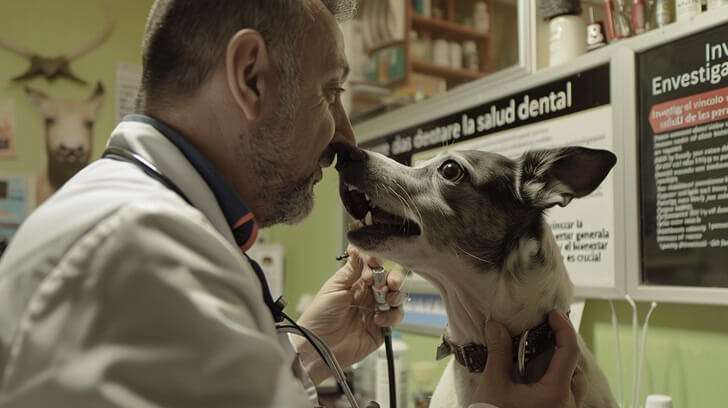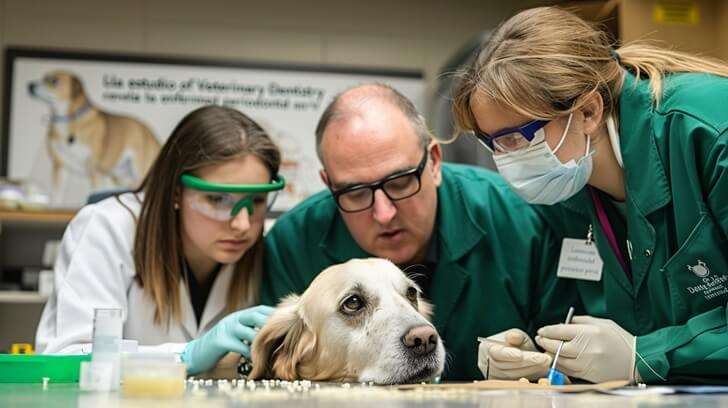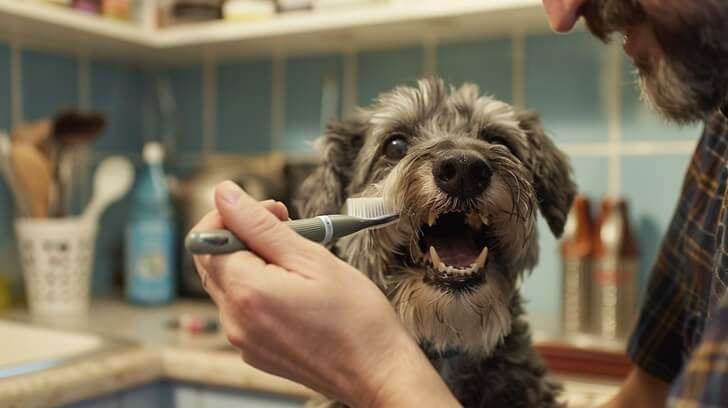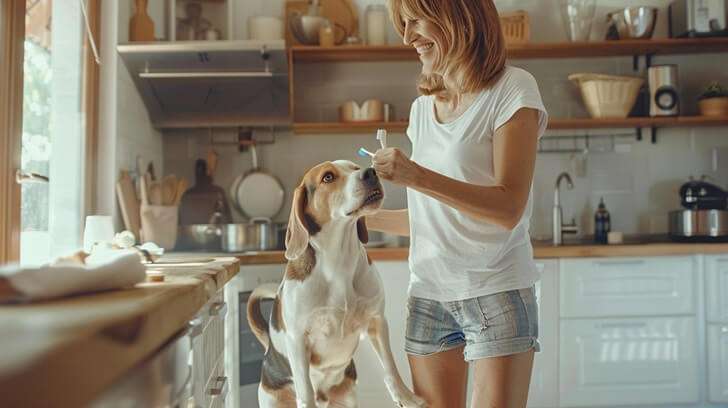
Have you ever been met with a strong whiff of your furry friend’s bad breath when they greet you? If so, you’re not alone. Bad breath in dogs, medically referred to as halitosis, is a widespread issue that many pet owners encounter. While it may appear to be a minor inconvenience, persistent bad breath can signify serious underlying health problems, particularly dental issues. In fact, studies have shown that up to 80% of dogs show signs of dental disease by the age of three, making it crucial for pet owners to take preventive measures.
Maintaining your dog’s dental hygiene is not just about ensuring fresh breath; it’s vital for their overall health and well-being. Neglecting dental care can lead to a range of health issues, from gum disease to systemic infections that can affect vital organs. In this comprehensive guide, we will explore effective strategies to combat bad breath in dogs and keep their dental health in check. We’ll delve into the reasons why good oral hygiene is essential, practical tips for everyday care, and common mistakes to avoid. Furthermore, we’ll back up our recommendations with scientific studies highlighting the importance of dental health in pets. By the end of this article, you will have a wealth of information to help your dog enjoy fresh breath and a healthy mouth.
The Importance of Tackling Bad Breath in Dogs
Addressing bad breath in dogs is not merely a cosmetic concern. Here are some compelling reasons to prioritize your dog’s dental health:
1. Indicates Overall Health

Bad breath can often be a sign of dental disease, which, if left untreated, can lead to more severe health issues such as infections, heart disease, and organ failure. According to the American Veterinary Medical Association (AVMA), dental problems can also lead to chronic pain, which can affect your dog’s behavior and quality of life. Regular dental care can help you detect these problems early, allowing for prompt intervention.
2. Improves Quality of Life
Dogs with dental problems can experience pain and discomfort that significantly affect their quality of life. Just like humans, dogs can suffer from gum disease, which can cause swelling, infection, and pain. Reducing bad breath through proper dental hygiene can lead to happier, more comfortable pets. Your dog will be more inclined to engage in playful activities and enjoy their meals without discomfort.
3. Enhances Bonding
Regular oral care routines, such as brushing your dog’s teeth, can enhance your bond with your pet. The process of caring for their teeth is an opportunity for positive interaction and trust-building. Regular grooming sessions can become a cherished part of your routine, where your dog learns to enjoy the attention and care you provide.
4. Prevents Costly Vet Bills

Preventative dental care is much more cost-effective than treating advanced dental diseases. According to the American Animal Hospital Association (AAHA), dental cleanings and treatments can range from $300 to $1,500, depending on the severity of the condition. By investing time and effort in maintaining your dog’s oral health, you can save money on future veterinary bills. Routine home care, like brushing, can drastically reduce the risk of needing expensive dental procedures down the line.
5. Fresh Breath Equals More Cuddles
Lastly, who doesn’t love snuggling with a dog that has fresh breath? Your dog’s breath will be much more pleasant, making those affectionate moments much more enjoyable. It can also make playtime and training sessions more pleasant, as you won’t be distracted by unpleasant odors.
A Step-by-Step Guide to Maintaining Your Dog’s Dental Health
Here’s a detailed guide on how to maintain your dog’s dental health effectively:
1. Regular Teeth Brushing

Just like humans, dogs need regular teeth brushing to remove plaque and tartar buildup. Aim to brush your dog’s teeth at least two to three times a week.
- Choosing the Right Tools: Invest in a toothbrush designed specifically for dogs, which will be gentler on their gums and teeth. Dog toothbrushes come in various sizes, so choose one that fits comfortably in your hand and can easily reach your dog’s teeth. You can also use finger brushes for smaller breeds.
- Toothpaste: Use toothpaste specifically designed for dogs, as human toothpaste can be harmful to them due to ingredients like xylitol, which is toxic to pets. Dog toothpaste comes in various flavors, such as poultry or peanut butter, making it more appealing to your pet.
- Brushing Technique: Start by letting your dog taste the toothpaste to familiarize them with the flavor. Once they are comfortable, gently lift their lip and brush in a circular motion, focusing on the gum line and back teeth where plaque tends to accumulate. It’s essential to make the experience positive, using treats and praise to reward your dog for their cooperation.
2. Dental Chews and Toys

Incorporating dental chews and toys into your dog’s routine can aid in reducing plaque and tartar buildup.
- Dental Chews: Look for dental chews that are approved by veterinary dental associations. These chews are formulated to help reduce plaque and tartar while providing a satisfying chew experience for your dog. Be sure to select chews appropriate for your dog’s size and chewing habits.
- Chew Toys: Durable chew toys designed for dental health can help clean your dog’s teeth as they chew. Many toys have textures and shapes that encourage chewing in a way that promotes dental hygiene. Rotate toys regularly to maintain your dog’s interest.
3. Routine Veterinary Cleanings

Schedule regular check-ups and professional cleanings with your veterinarian.
- Professional Cleanings: Even with a diligent home care routine, professional cleanings are essential to remove tartar buildup that brushing cannot address. Your veterinarian can assess your dog’s oral health and perform cleanings that are not feasible at home.
- Dental Check-ups: During your vet visits, ask for a thorough dental examination. Your vet can identify early signs of dental disease, such as gingivitis or periodontal disease, and recommend treatment options.
4. Healthy Diet Choices

Choose high-quality dog food that promotes dental health.
- Dental Diets: Some dog food brands offer dental formulas designed to help reduce plaque and tartar through special kibble shapes and textures. These diets are formulated to promote dental hygiene while providing balanced nutrition.
- Fresh Vegetables: Incorporating fresh vegetables like carrots or apples as treats can also help clean your dog’s teeth naturally. Chewing on crunchy vegetables can help scrape off plaque and promote healthier gums.
5. Hydration
Ensure your dog has constant access to fresh water.
- Importance of Hydration: Hydration helps wash away food particles and bacteria in the mouth, which can contribute to bad breath. Consider providing a water fountain for your dog, as many dogs prefer running water, which encourages them to drink more.
- Additive Products: Some products are designed to be added to your dog’s water to promote dental health. These additives can help reduce plaque and freshen breath, but consult your veterinarian before using them.
6. Consider Dental Health Products
In addition to brushing and dental chews, consider using other dental health products to complement your dog’s oral hygiene routine.
- Dental Wipes: Dental wipes can be a convenient alternative to brushing. They help remove plaque and food particles from your dog’s teeth and gums. Simply wrap the wipe around your finger and rub it along your dog’s teeth and gums. However, they should not replace brushing entirely but can be a useful addition.
- Dental Sprays or Gels: There are dental sprays and gels available that can help reduce bad breath and promote oral health. These products often contain antibacterial agents that target bacteria responsible for bad breath. Always check with your veterinarian for recommendations.
- Regular Oral Exams: In addition to professional cleanings, regular oral exams are vital for assessing your dog’s dental health. Your veterinarian can identify issues early and recommend appropriate treatment.
7. Monitor and Adjust
Keep an eye on your dog’s dental health and make adjustments as needed.
- Watch for Changes: Pay attention to changes in your dog’s breath, eating habits, or behavior. If you notice any issues, consult your veterinarian for further evaluation.
- Modify Diet and Care: As your dog ages, their dental care needs may change. Be prepared to modify their diet and care routine accordingly, and consult your vet for personalized recommendations.
Common Mistakes to Avoid When Addressing Bad Breath in Dogs
Here are some common pitfalls that pet owners should avoid:

1. Ignoring the Problem
Many pet owners dismiss bad breath as a minor issue. However, ignoring it can lead to severe dental diseases. If your dog has persistent bad breath, consult your veterinarian.
2. Using Human Products
Some pet owners mistakenly use human toothpaste or mouthwash on their dogs, which can be toxic to them. Always use products formulated specifically for dogs.
3. Inconsistent Care
Skipping dental care routines can lead to a rapid buildup of plaque and tartar. Establish a consistent dental care schedule and stick to it. Set reminders on your phone or calendar to help you stay on track.
4. Neglecting Regular Vet Visits
Some owners might think that regular home care is enough. However, professional cleanings and check-ups are vital for monitoring your dog’s dental health and addressing issues that might not be visible.
5. Overlooking Signs of Dental Disease
Bad breath isn’t the only sign of dental disease. Be vigilant for other signs such as swollen gums, difficulty eating, or excessive drooling, and seek veterinary advice promptly.
6. Relying Solely on Treats
While dental chews and treats are beneficial, they should not replace brushing. Treats can help maintain dental health, but they cannot remove plaque and tartar as effectively as brushing. Use them as a supplement to your oral care routine, not as a substitute.
Scientific Support for Dental Health in Dogs

Research has established a strong link between oral health and overall well-being in dogs. A study published in the Journal of Veterinary Dentistry revealed that periodontal disease is one of the most common diseases affecting dogs, often leading to systemic health problems. Inflammation in the mouth can result in bacteria entering the bloodstream, affecting organs such as the heart and kidneys.
The American Veterinary Dental College (AVDC) emphasizes the importance of dental care, stating that untreated dental diseases can lead to pain, difficulty eating, and even serious systemic diseases. Regular veterinary dental check-ups and at-home care are essential to prevent these issues.
Moreover, a survey conducted by the American Animal Hospital Association (AAHA) showed that a significant percentage of dog owners were unaware of the importance of dental health for their pets. The survey highlighted that only 10% of pet owners practiced regular dental care, underscoring the need for increased awareness and education in the pet owner community.
Conclusion

In summary, maintaining your dog’s dental health is essential for reducing bad breath and promoting overall well-being. Regular brushing, dental chews, professional cleanings, and a balanced diet are all effective strategies to ensure fresh breath and a healthy mouth. By taking proactive steps and being aware of common pitfalls, you can make a significant difference in your dog’s dental health and overall happiness.
Don’t overlook the importance of your dog’s dental hygiene. Start implementing these strategies today, and enjoy the benefits of a happy, healthy pup.
For those looking for more comprehensive guidance on dog training and care, don’t forget to check out the Dog Trainer Bible. This essential resource can help you build a stronger bond with your pet and ensure their happiness and well-being. Empower yourself with the knowledge and tools you need to provide the best care for your furry friend!
